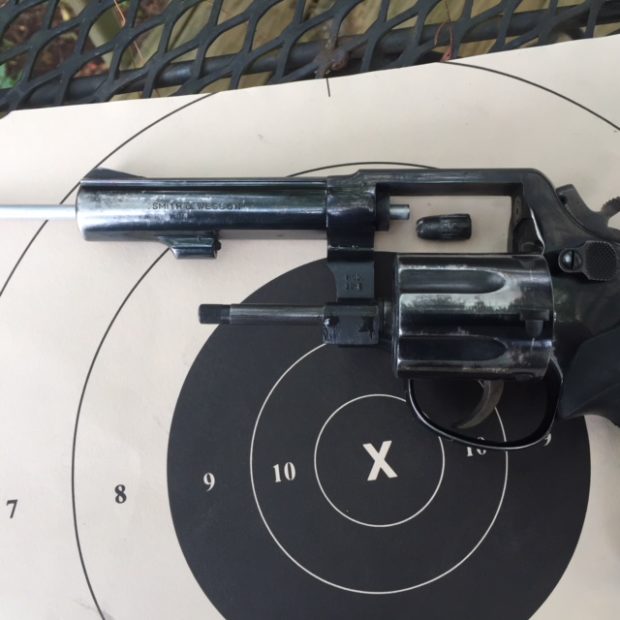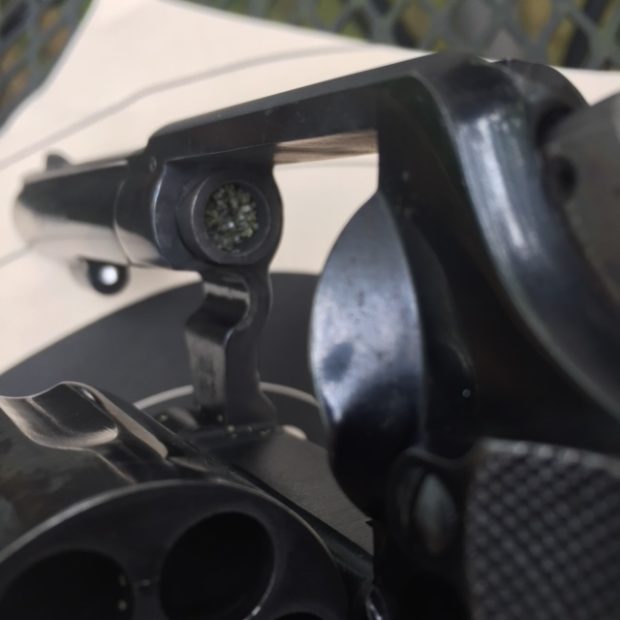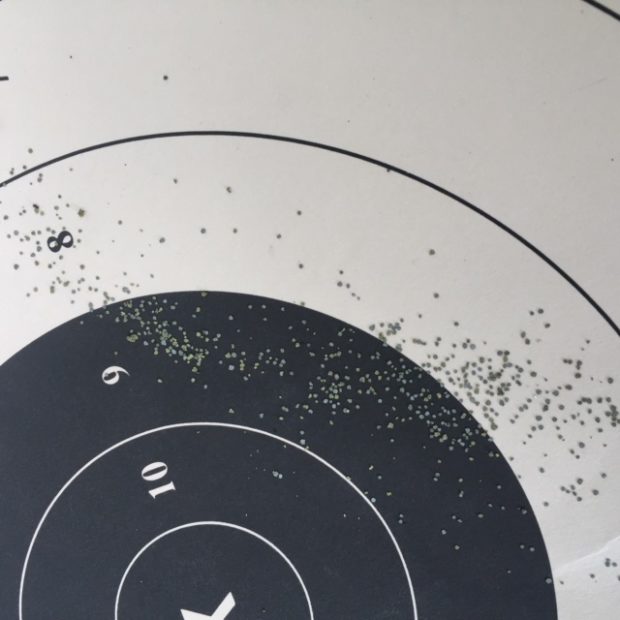Written by: Greg Ellifritz
During a recent range training session, I was doing some shooting with a couple of my revolvers for a change of pace. While shooting a beat up Model 10 Smith and Wesson, I experienced a squib load.
I shoot a bunch of .38 ammo every year and I can’t remember the last time I had a squib load in a factory loaded round. For what it’s worth, I was shooting 158 grain Lead Round Nose .38 Special ammo. It was the PPU brand manufactured by Privi Partizan. I’ve already fired several boxes out the case of these rounds that I bought. Only this one round has been a problem.
If you don’t know what a squib load is, I’ll explain it in the article below. Basically it’s a malfunctioning cartridge. Most commonly the primer fails to ignite the main powder charge in the case. It can be caused by a bad primer, a badly formed primer pocket in the case, or gunpowder that is old or has gotten wet.
The problem with a squib is that the bullet may actually leave the case, but then get stuck in the barrel. If you carelessly fire a second round after the squib, the second bullet might hit the blockage and blow up your gun. Every squib is different. Sometimes, the bullet is barely outside the case. Sometimes it gets hung up between the cylinder and the forcing cone. The bullet can also get stuck in the barrel or even exit the barrel and fall to the ground.
My squib lodged about 1/2 inch into the barrel. I’m very glad I recognized it and knew not to fire a round behind it.
Here’s how to identify a possible squib:
–Quieter than normal report. Squibs can happen with any type of cartridge (including rounds fired out of rifles, shotguns, or semi-automatic pistols). The most obvious indication is that the gunshot sounds different. It is much quieter than a normal round. Usually it is just the sound of the primer popping. If you hear a gunshot that is about 1/4 the normal sound, stop and check for a blocked barrel.
-Loose gun powder falling out of the gun. If the powder charge doesn’t ignite, it is generally shot down the barrel behind the bullet. When you open up the cylinder, a bunch of loose gun powder may fall out. It’s a pretty good indication that you have a blocked barrel as it would have otherwise been blown out the end of the barrel.
-No hole in the target. The bullet may be stuck in the barrel or may have fallen to the ground shortly after exiting the gun. In either event, you won’t see a hole in your target when you expected to see one.
-If shooting a revolver, a bound up cylinder. Occasionally, a squib will drive the bullet out of the cylinder, but it will not have the power to carry the bullet all the way into the barrel. The bullet gets caught partially in the cylinder and partially in the barrel. On a revolver, that locks the cylinder tight. You can’t pull the trigger, cock the hammer, or open the cylinder. That’s a pretty good indication that something is screwed up!
What should you do if you suspect a squib?
Most importantly, STOP SHOOTING! You don’t want to take the chance of an obstructed barrel blowing up your gun if you continue firing.
Unload the gun and inspect the barrel to ascertain if there are any blockages. If the bullet is stuck in the barrel, use a cleaning rod and a mallet/hammer to drive the bullet out of the barrel. I normally do this from the muzzle end as inserting a longer rod through the frame opening (where the closed cylinder resides) is generally difficult. That’s what I had to do with this one. A couple smacks with a hammer popped the bullet right out.
After you get the bullet out, inspect the barrel of any bulges, cracks, or deformities. If you don’t find any, the gun should be as good as new after a thorough cleaning.
Be extra cautious with any additional ammunition from the same lot.




